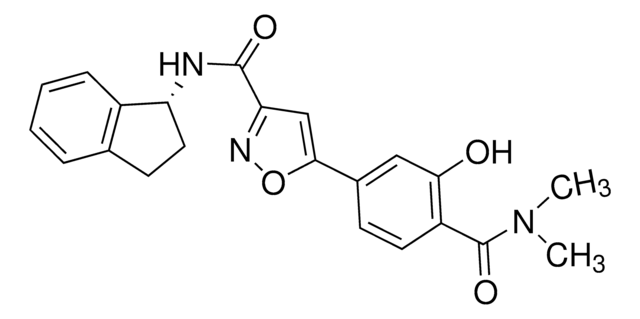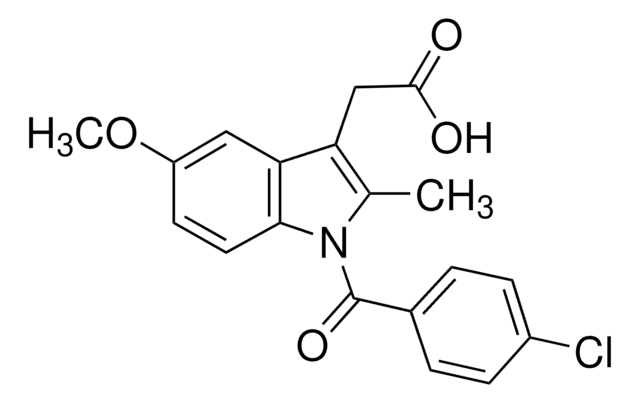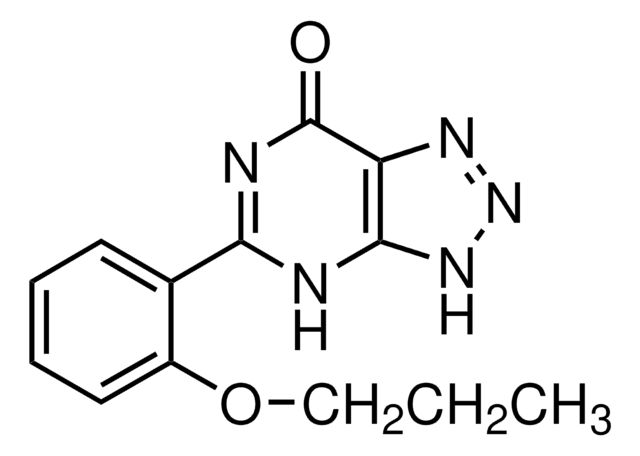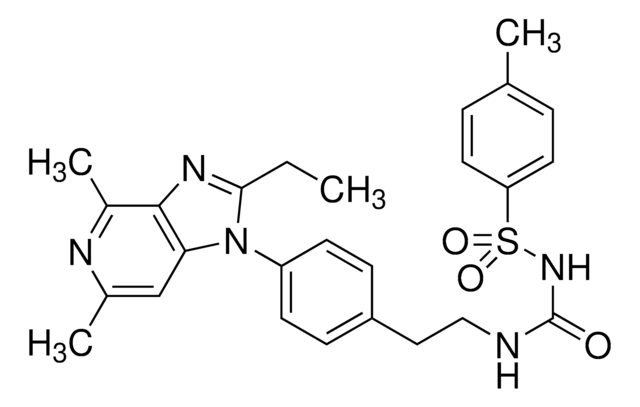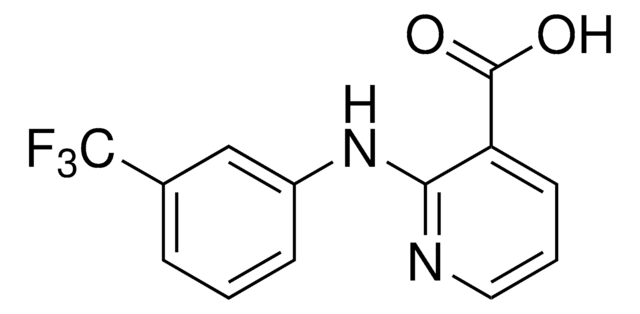S3065
SC 19220
≥98% (HPLC), solid
Sinónimos:
2-Acetylhydrazide 10(11H)-carboxylic acid, 8-Chloro-dibenz[b,f][1,4]oxazepine-10(11H)-carboxylic acid
About This Item
Productos recomendados
assay
≥98% (HPLC)
form
solid
color
white
mp
190-191 °C (lit.)
solubility
DMSO: soluble 10 mg/mL
H2O: insoluble
SMILES string
CC(=O)NNC(=O)N1Cc2ccccc2Oc3ccc(Cl)cc13
InChI
1S/C16H14ClN3O3/c1-10(21)18-19-16(22)20-9-11-4-2-3-5-14(11)23-15-7-6-12(17)8-13(15)20/h2-8H,9H2,1H3,(H,18,21)(H,19,22)
InChI key
KNURFLJTOUGOOQ-UHFFFAOYSA-N
Gene Information
human ... PTGER1(5731)
rat ... Ptger1(25637)
Application
Biochem/physiol Actions
Storage Class
11 - Combustible Solids
wgk_germany
WGK 3
flash_point_f
Not applicable
flash_point_c
Not applicable
ppe
Eyeshields, Gloves, type N95 (US)
Certificados de análisis (COA)
Busque Certificados de análisis (COA) introduciendo el número de lote del producto. Los números de lote se encuentran en la etiqueta del producto después de las palabras «Lot» o «Batch»
¿Ya tiene este producto?
Encuentre la documentación para los productos que ha comprado recientemente en la Biblioteca de documentos.
Nuestro equipo de científicos tiene experiencia en todas las áreas de investigación: Ciencias de la vida, Ciencia de los materiales, Síntesis química, Cromatografía, Analítica y muchas otras.
Póngase en contacto con el Servicio técnico

